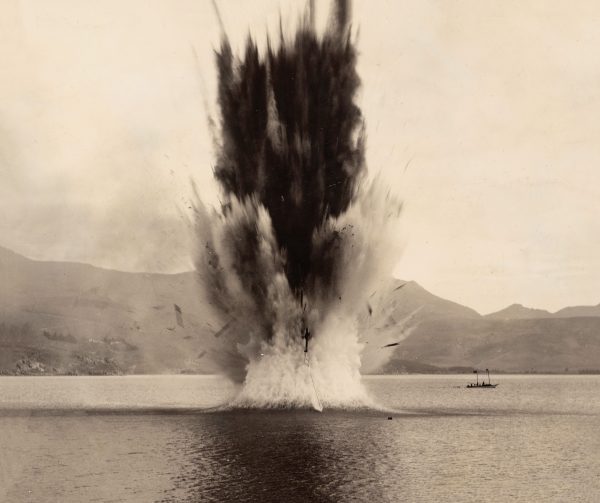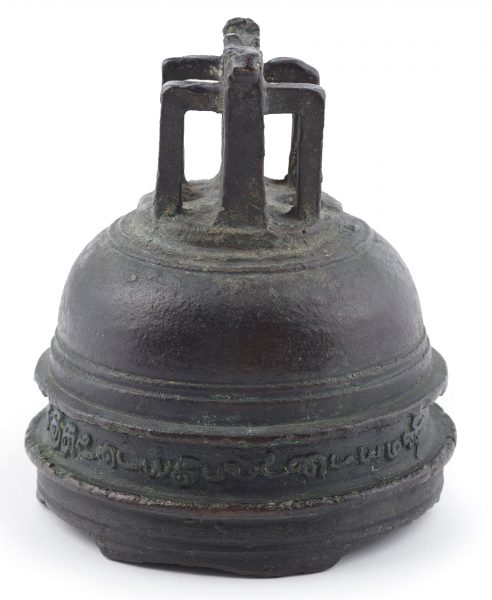Stevenson’s close call
On a brief visit to Auckland, the celebrated author of Treasure Island almost didn’t make it out of the harbour.

On the evening of April 18, 1890, the small island trader Janet Nicoll steamed into the Waitematā Harbour after a rough crossing from Sydney. Crewed largely by Solomon Islanders, it also had on board a literary celebrity, Robert Louis Stevenson, his American wife, Fanny, and his stepson, Lloyd. There were also three others aboard whose names would adorn the dedication page of a collection of Stevenson’s island stories: Harry Henderson, a partner in the Auckland-based trading firm that owned the vessel, Ben Hird, the ship owners’ representative, who had an unrivalled knowledge of the islands, and Jack Buckland, a colourful copra trader known everywhere as “Tin Jack”.
It was fate, rather than planning, that delivered the 39-year-old Stevenson to these shores. Years earlier, frail and ailing, he had quit Scotland in search of a more benign climate. Alerted to the charms of the South Pacific by a chance conversation with William Seed, a Wellington civil servant he met in Edinburgh, Stevenson eventually fetched up in Samoa, where he purchased 128 hectares for what was to be his future home, Vailima.
While en route to England for a last visit to friends and to finalise the move, Stevenson had fallen seriously ill in Sydney, and in a desperate bid to revive his health, Fanny convinced Henderson to let them join the Janet Nicoll on its four-month cruise.
On reaching Auckland, they anonymously checked into the Star Hotel. The next day, sporting a stained white suit and straw hat, Stevenson set out to do some shopping, but the exertion proved too much. He collapsed and was stretchered back to the steamer, where he scribbled an apology to Sir George Grey, whom he had hoped to meet. Meanwhile, Tin Jack and Lloyd had better luck, buying fireworks, greasepaint, a false nose, a wig, and cartridges to entertain Tin Jack’s hired hands. Lloyd expressed doubt about the 4.5 kilograms of “calcium fire” that Tin Jack had purchased, but was reassured that it was “as safe as a packet of sugar”.
Late that same evening, several hours after the Janet Nicoll had got under way, and while Fanny was eating brown bread in the saloon and Tin Jack and Lloyd were in Henderson’s cabin discussing land sales over coffee, Stevenson was roused from his bunk by flickering light, and a chemical stench coming from Tin Jack’s cabin. He stood in the doorway transfixed by the squeal of rockets and a shaft of vivid blue, green, and red fire, and muddled by thick white smoke that was belching from the ship’s ports.
The ever-practical Fanny managed to rescue a blazing trunk containing Stevenson’s unfinished manuscripts—the crew were about to throw it overboard—and gradually the fire below was brought under control. To everyone’s chagrin, Tin Jack lost nothing amid the chaos, but Lloyd lost all of his packed clothes, and the Stevensons the greater part of their island photographs.
It had been a close call.
“Had the wind come from a different quarter, or had the cartridges exploded, nothing could have saved us,” the captain confided to Fanny. He told her how lucky they had been to have a trusted man at the wheel.
“Lloyd and I said nothing, but we both knew there had been no man at the wheel,” Fanny wryly noted in her diary. “The trusted one ran below with the rest.”
The New Zealand Herald reported that “only two or three people” in the city knew of the famous writer’s visit. Stevenson called at Auckland once more, in February 1893, when he finally spent time with the ageing Sir George. But his writing career was drawing to a close, and in December 1894, Stevenson died of a cerebral haemorrhage at Vailima, aged just 44.

















